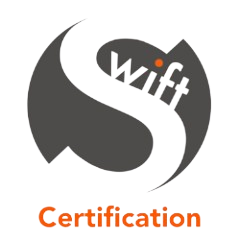Embarking on the path to ISO 27001 certification can seem a formidable undertaking, especially for a first-timer. This internationally recognised standard for information security management systems (ISMS) involves a systematic approach to protecting your company’s sensitive data. However, with a clear roadmap and an understanding of key principles, the process becomes a manageable and highly valuable business improvement. This guide will translate the standard’s requirements into a clear, actionable journey from initial planning to successful certification.
The Essential Foundation: Securing Management Commitment
Before delving into documentation and controls, you must secure one critical component: visible and active commitment from senior management. This is the non-negotiable foundation of a successful project, as mandated by Clause 5.1 of the standard.
Leadership must do more than just approve the budget; they need to demonstrate accountability for the ISMS’s effectiveness. This involves:
- Integrating information security into business processes and strategic planning.
- Ensuring adequate resources are available, including competent personnel and technology.
- Leading by example by participating in training and management reviews.
- Establishing security objectives that align with broader business goals.
Without this top-down support, your project will lack the authority and drive needed to implement meaningful change across the organisation. An external auditor will specifically look for evidence of this commitment, and its absence can single-handedly lead to a failed audit.
Core Concepts Decoded: ISMS, Risk Assessment, and the SoA
Understanding these three key concepts is crucial to navigating your certification journey.
What Is an ISMS?
An Information Security Management System (ISMS) is a systematic framework of policies, processes, and procedures designed to manage your organisation’s information security risks. Think of it not as an IT system, but as a holistic management system that encompasses people, processes, and technology to protect the confidentiality, integrity, and availability of your data.
The Risk Assessment Process
Risk assessment is the cornerstone of your ISMS. It is a documented, repeatable process where you:
- Identify risks to your information assets.
- Analyse and evaluate these risks based on their likelihood and potential impact.
- Decide how to treat each risk, whether by modifying it with new controls, avoiding it, transferring it (e.g., via cyber insurance), or accepting it.
This process ensures your security controls are targeted and proportionate to the actual threats your business faces.
The Statement of Applicability (SoA)
The SoA is a critical document that acts as a bridge between your risk assessment and your control implementation. It is a comprehensive report that:
- Lists all 93 controls from Annex A of ISO/IEC 27001:2022.
- States which controls are applicable to your organisation and justifies any exclusions.
- Describes how each applicable control has been, or will be, implemented.
The SoA provides a clear, auditable summary of your risk treatment decisions and is one of the first documents an external auditor will examine.
The Engine of Improvement: The PDCA Cycle
The Plan-Do-Check-Act (PDCA) cycle is the operational model that powers continual improvement within your ISMS, ensuring it adapts to new threats and business changes.
- Plan: Establish the ISMS by defining its scope, objectives, and processes based on your organisational context and risk assessment.
- Do: Implement the planned processes and controls. This includes rolling out policies, deploying security technologies, and conducting employee training.
- Check: Monitor and measure your ISMS performance. This involves conducting internal audits, reviewing incidents, and evaluating whether security objectives are being met.
- Act: Take corrective actions to address any issues found during the ‘Check’ phase and pursue opportunities for improvement, thereby feeding lessons back into a new planning cycle.
Your Certification Roadmap: From Planning to Audit
The journey to certification can be broken down into a clear sequence of stages. The timeline for this process varies by organisation size, typically taking several months for smaller companies to over a year for larger enterprises.
Phase 1: Implementation and Preparation
- Secure Leadership Buy-in and Create a Project Plan: Appoint a project team and define timelines, ensuring management is fully on board.
- Define Your ISMS Scope: Determine the boundaries of your ISMS. Will it cover the entire organisation or a specific department, product, or service?
- Perform a Risk Assessment & Develop the SoA: Conduct a thorough risk assessment and use the results to create your Statement of Applicability.
- Implement Policies and Controls: Develop and roll out the necessary policies, procedures, and technologies to address the risks identified in your treatment plan.
- Conduct Training and Awareness Programs: Train all employees on their information security responsibilities and the new procedures.
- Perform an Internal Audit: Conduct your own audit to verify that the ISMS is functioning as intended and to identify any weaknesses before the external audit.
Phase 2: The Certification Audit
The formal certification audit is conducted by an independent or accredited body and happens in two stages. Please note that organisations must now be certified against the ISO 27001:2022 version.
- Stage 1: Documentation Review: The auditor examines your ISMS documentation (policies, risk assessment, SoA, etc.) to ensure it meets all ISO 27001:2022 requirements. They will provide a report identifying any nonconformities to address before Stage 2.
- Stage 2: Certification Audit: The auditor tests whether your policies and controls are effectively implemented and followed in practice. This involves interviewing staff, reviewing records, and observing processes. Upon success, you will be issued a certificate valid for three years.
Phase 3: Maintaining Certification
Certification requires ongoing maintenance, including annual surveillance audits by your certification body and a full recertification audit every three years. This ensures your ISMS remains effective and continues to improve.
Your Journey Awaits
Achieving ISO 27001 certification is a structured journey that transforms your organisation’s approach to information security. By securing leadership support, understanding the core concepts, and following a clear roadmap, you can build a resilient ISMS that not only earns certification but also provides a lasting competitive advantage and builds unwavering trust with your customers.
Ready to get certified? Let’s talk!





Hi! Do you use Twitter? I’d like to follow you if that would be
ok. I’m absolutely enjoying your blog annd look forward
to new posts.
Thank you, Vonnie, we’re glad you enjoyed reading this blog! We are active on LinkedIn, so if you have profile there please follow us for new publications.